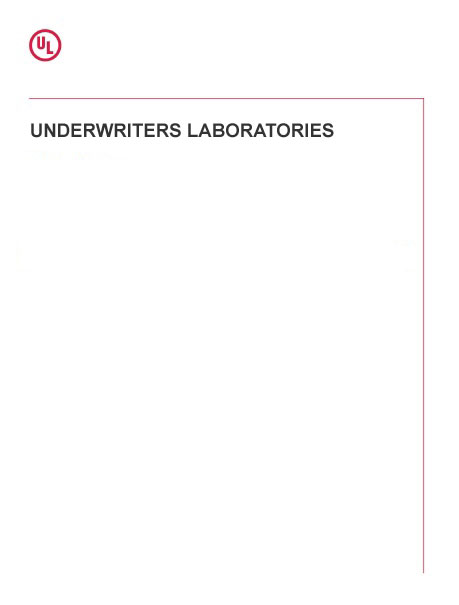Click here to purchase
Please note: All interim revisions for this edition available at time of your purchase will be included.
Power-Operated Pumps and Bypass Valves for Anhydrous Ammonia, LP-Gas, and Propylene
UL 51
1 Scope
1.1 These requirements cover power-operated pumps and bypass valves for use in liquid transfer operations in non-refrigerated systems in installations for:
- Anhydrous ammonia systems installed in accordance with the Safety Requirements for the Storage and Handling of Anhydrous Ammonia, CGA/GAS G-2.1 (ANSI K61.1);
- Liquefied petroleum gas (LP-Gas) systems installed in accordance with the Liquefied Petroleum Gas Code, NFPA No. 58; and
- Propylene systems.
1.2 These requirements do not cover:
- Pumps or compressors intended for handling anhydrous ammonia or LP-Gas or propylene in the gaseous phase and
- Pumps, compressors or bypass valves for anhydrous ammonia, LP-Gas, or propylene for use in chemical, petro-chemical, petroleum, or utility power plants; nor pipeline or marine terminals; nor related storage facilities at such plants or terminals.
1.3 Equipment covered by these requirements is for use with LP-Gas, propylene, or anhydrous ammonia as covered by the Standards and Codes in 1.1 and shall have a minimum service pressure rating in accordance with Table 1.1.
A pump without an integral bypass valve with a higher differential pressure obtained in the Differential Pressure Test, Section 17, is permitted to have a lower minimum service pressure rating if it is marked in accordance with 25.2.
| Maximum differential pressure produced when subjected to the Differential Pressure Test, Section 17 | Anhydrous ammonia and LP-Gas equipment minimum service pressure rating | Propylene equipment minimum service pressure rating |
| psig (kPa) | psig (kPa) | psig (kPa) |
| £ 100 (689) Propylene equipment only | Not applicable | 350 (2415) |
| £ 125 (862) | 350 (2415) | 375 (2585) |
| >125 (863) # 150 (1034) | 375 (2586) | 400 (2758) |
| >150 (1034) # 200 (1379) | 400 (2758) | 425 (2930) |
| 200 (1379) | 200 + differential pressure produced (1379 + differential pressure produced) | 225 + differential pressure produced (1551 + differential pressure produced) |
Product Details
- Edition:
- 10
- Published:
- 05/31/2013
- Number of Pages:
- 28

